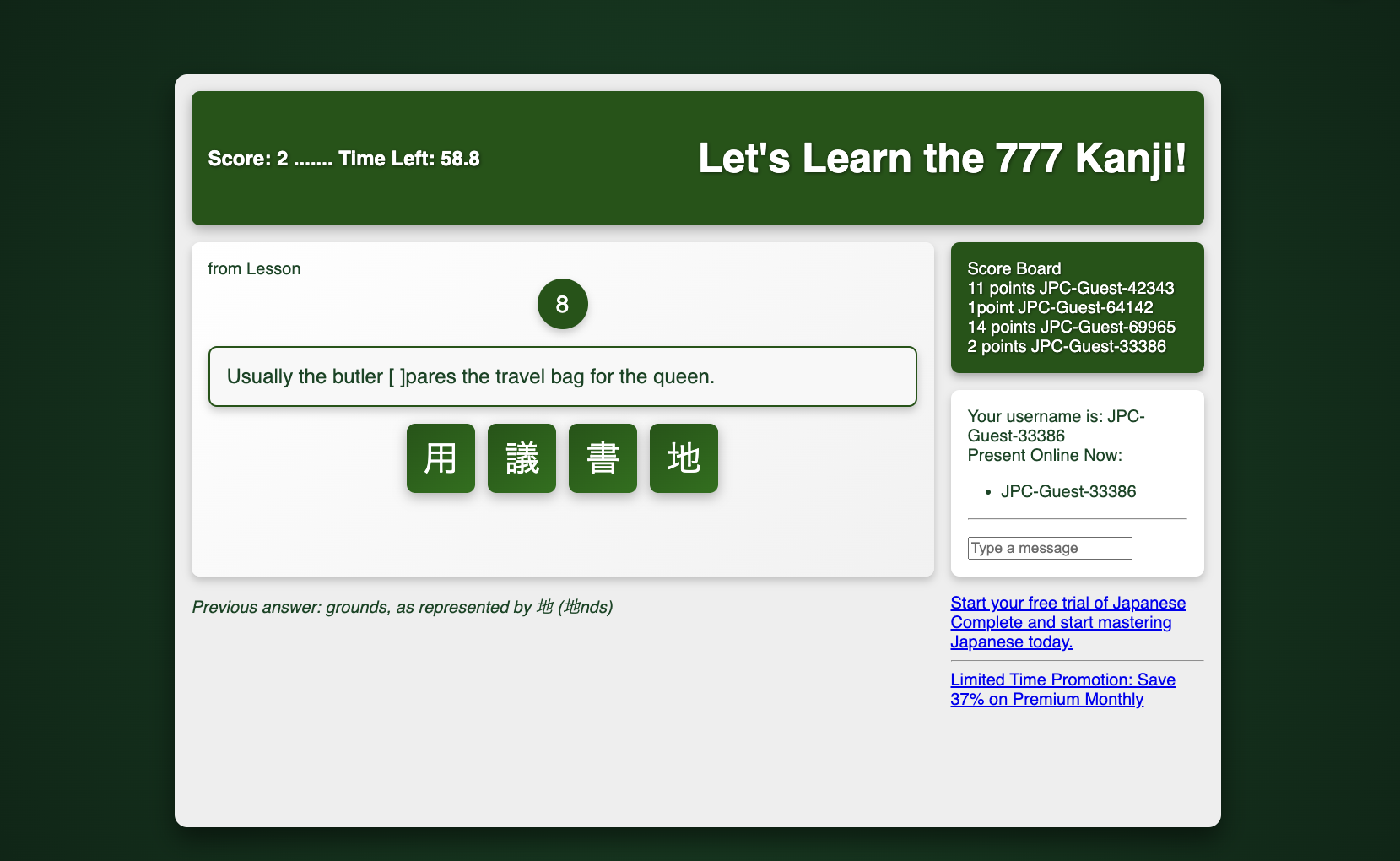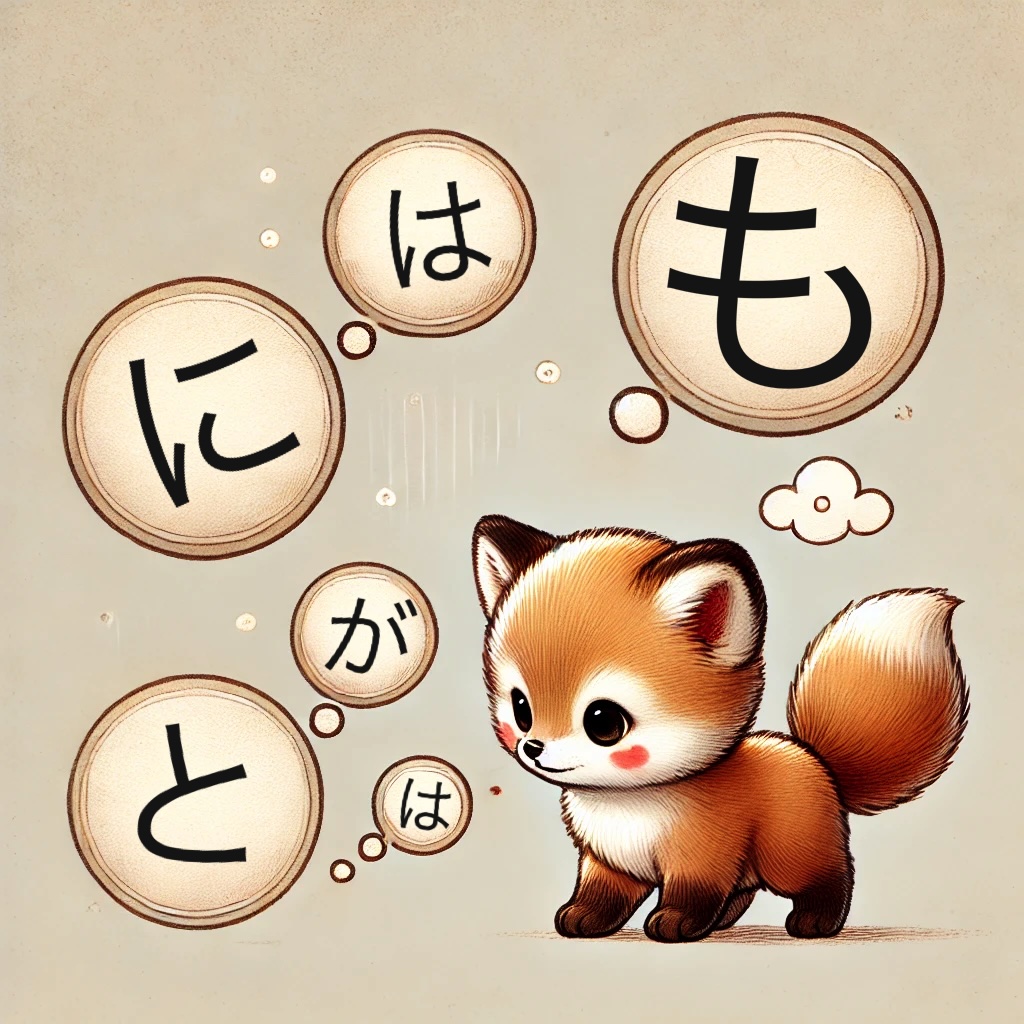Are you tired of traditional Japanese learning methods that seem to drag on forever? Do you dream of reading Japanese fluently but feel overwhelmed by the thousands of kanji characters? Get ready for a game-changer in language learning! Japanese Complete is thrilled to announce the launch of our groundbreaking multiplayer game, “Let’s Learn the 777Continue reading “Revolutionizing Japanese Learning: Introducing ‘Let’s Learn the 777 Kanji!’ – Our New Multiplayer Game”
Category Archives: Japanese
The Future of Japanese Fluency: How Japanese Complete is Revolutionizing Language Learning
Introduction In the world of language learning, the journey to fluency in Japanese is often fraught with obstacles. Many learners find themselves stuck on the “Intermediate Plateau,” where progress slows and fluency seems elusive. Enter Japanese Complete—a meticulously crafted curriculum designed to propel learners beyond this plateau and towards mastery. By leveraging the Balanced CorpusContinue reading “The Future of Japanese Fluency: How Japanese Complete is Revolutionizing Language Learning”
🎉 Meet Aiko: Your Friendly AI Companion for Mastering Japanese! 🇯🇵
Hello Future Polyglots! 🌟 We’re thrilled to introduce Aiko, your new AI companion here to guide you on a fun and expedited journey to mastering Japanese! Whether you’re a complete beginner, an intermediate learner, or advanced, Aiko adapts to your level, ensuring a tailored and effective learning experience. 📘 Aiko is your personal digital senseiContinue reading “🎉 Meet Aiko: Your Friendly AI Companion for Mastering Japanese! 🇯🇵”
What are Japanese Particles?
What are Japanese particles? They are role-marking hiragana that follow nouns to explain the who, what, when, where, why, and how in a sentence. They are akin to the W-words of English.
The Japanese Complete System
Learn. Train. Retain. Japanese Complete is an interactive textbook with precious insights, helpful quizzes, kanji etymology and mnemonic scenes, kanji writing practice, audio reading tutor, and a platform fitted with tools to help you start generating real Japanese. 1) Listen and Read along to the lessons in the book. Each page is modular so youContinue reading “The Japanese Complete System”
Study, Immersion, Generation
Study, Immersion, and Generation are the keys to quickly attaining proficiency in any target language. While other services provide excellent opportunities for “Immersion,” at Japanese Complete we strive to provide excellent solutions for both “Study” and “Generation.”
Updated 777 Kanji List
With 777 kanji one has 90% coverage of Kanji in the wild! The Japanese Complete curriculum is arranged according to frequency analysis done by a research team in 2011 on the Balanced Contemporary Corpus of Written Japanese.
Feb 2020 Features Video Released
Master Japanese with the leading online learning solution to provide you with a working mental model of the Japanese language, training and repetition to retain what you know, and thorough explanations you just cannot get anywhere else.
Japanese Complete was created by polylingual language teachers to provide a comprehensive and elegant way to achieve fluency in the Japanese language, written, spoken, and read, rapidly.
With Japanese Complete, you can start your journey to mastery of Japanese by practicing grammar with thorough explanations and drills, Kanji with beautiful mnemonics, fun stories, and Kanji in English Context an invention created for the Japanese Complete curriculum.
Essential Japanese: The Mental Model, Guide Released
Japanese Complete is delighted to announce the release of an essentials guide for Japanese, absolutely free. This guide is available free of charge for educational purposes and is not to be reprinted without permission. Download at https://japanesecomplete.com/guide What’s in the guide? Table of Contents Designed to give beginners an edge in conquering the Japanese mentalContinue reading “Essential Japanese: The Mental Model, Guide Released”
Japanese Complete 1.0
Japanese Complete 1.0 is released today. Get a subscription and start mastering Japanese. Don’t just learn Japanese, master it!








